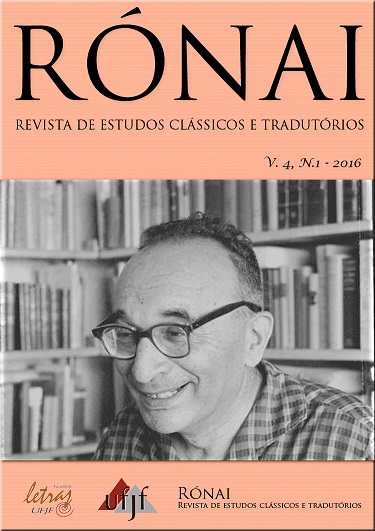A explicação do erro em didática da tradução: erro no processo ou erro no produto?
Palabras clave:
erro de tradução, didática, processo tradutório, interferênciaResumen
A influência emocional e psicológica que a explicação dos erros de tradução exerce sobre os alunos torna muito importante o estudo desse tema para a didática da tradução. Este artigo apresenta uma pesquisa exploratória subjetiva sobre o assunto, mas que inclui o fator quantitativo por meio da análise comparativa das entrevistas semiestruturadas aplicadas a dois grupos de professores de tradução pertencentes a duas universidades distintas, uma no Canadá, outra na Colômbia. A pesquisa destacou a importância de reconhecer o processo tradutório dos alunos a fim de explicar os seus erros, e a influência do contexto acadêmico e global do país na didática desenvolvida pelos professores estudados. Tais resultados foram colocados em perspectiva quanto às condições materiais de ensino, diferentes para cada grupo. Hipóteses e orientações didáticas são propostas no fim do artigo.
Descargas
Citas
HURTADO ALBIR, A. (1996). La enseñanza de la traducción. Castelló: Universitat Jaume I. Lederer, M. (1994). La traduction aujourd’hui: le modèle interprétatif. Paris: Hachette. Lee-Jahnke, H. (2001). Aspects pédagogiques de l’évaluation en traduction. Meta. 46(2), 258-
271.
Mejía Quijano, C. (2009). L’erreur: la place du traducteur.En Forstner, M., Lee-Jahnke, H., & A. Schmitt, P. (eds.). CIUTI-FORUM 2008. Enhancing translation quality: ways, means, and methods (313- 326). Bern: Peter Lang.
Mejía Quijano, C., Ansermet, F., & Germond, M. (2006). Parentalité stérile et procréation médicalement assistée. Le dégel du devenir. Ramonville Saint-Agne: Eres.
Mejía Quijano, C. & Marmolejo, S. (2010). Las prácticas de transferencia, laboratorio del habla. Entornos, 23, 93-103.
Nord, C. (2012). Texto base-texto meta. Un modelo funcional de análisis pretraslativo. Universitat Jaume I. Servei de Comunicació i Publicacions.
Nord, C. (1996). El error en la traducción: categorías y evaluación. En A. Hurtado Albir (ed.). La enseñanza de la traducción. Castellón: Publicaciones de la Universidad Jaume I.
Lederer, M. (2001). Bilinguismo y lenguas en contacto. Madrid: Alianza.
Toury, G. (1979). Interlanguage and its manifestations in translation. Meta. 24, 223-231.
Weinreich, U. (1953). Languages in contact. French, German and Romansh in twentieth century Switzerland. New York: Linguistic Circle of New York.
Descargas
Publicado
Cómo citar
Número
Sección
Licencia
Derechos de autor 2016 Eliana Acevedo Zabala, Claudia Mejía Quijano

Esta obra está bajo una licencia internacional Creative Commons Atribución 4.0.
Derechos de autor
Los autores que publican en esta revista aceptan los siguientes términos:
1. Los autores y las autoras conservan los derechos de autor y le otorgan a la revista el derecho a la primera publicación, que está bajo la licencia Creative Commons Attribution License 4.0 Internacional.
2. Los autores y las autoras pueden publicar y compartir el trabajo con reconocimiento de la publicación inicial en esta revista.
3. Los autores y las autoras de las obras aprobadas autorizan a la revista a asignar el contenido de sus obras, después de la publicación, para su reproducción en indexadores de contenido, bibliotecas virtuales y similares.
Para obtener más información sobre Creative Commons Attribution License 4.0 Internacional, acceda a: https://creativecommons.org/licenses/by/4.0/deed.es
Exención editorial
El contenido de los artículos publicados es responsabilidad única y exclusiva de sus autores, y no representa la posición oficial de Rónai - Revista de Estudos Clássicos e Tradutórios o de la Faculdade de Letras de la Universidad Federal de Juiz de Fora o instituciones asociadas.



